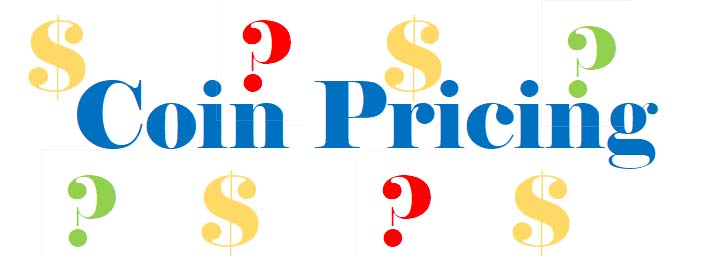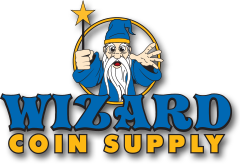What’s in the Dealer’s Margin?

The difference between wholesale pricing (what a dealer pays for coins) and retail pricing (what the dealer sells them for) is the dealer’s margin. We do not say it is the dealer’s profit because the margin has to cover the dealer’s expenses as well as the dealer’s profit. Here are some of the things that the margin has to cover:
Overhead—overhead can vary greatly between dealers. Large dealers may have a physical location with associated rent or mortgage payment, utilities and perhaps employee salary, benefit and payroll taxes. Even dealers without a physical location or employees can incur overhead costs such as insurance, security, business licenses, bourse fees, membership dues and subscriptions, supplies and tools, shipping, and phone and internet service. Advertising and marketing costs must be incurred to connect the dealer with customers interested in buying or selling coins. Just because a dealer has more overhead does not necessarily mean they have to charge more or pay less for coins. That larger overhead usually exists in support of larger volume that may mean a smaller percentage of revenue is needed to cover overhead.
Opportunity Cost—The capital invested in inventory must earn the dealer a return on their invested capital equal to or greater than what the dealer can earn elsewhere (either in another investment, another profession or a different coin). A $100 coin that takes a year to sell ties up twice as much of the dealer’s working capital as a $100 coin that sells in 6 months. Thus, the margin must be greater on slower selling coins to compensate for the longer use of capital. If the dealer utilizes a line of credit or other financing in order to purchase inventory, a portion of the margin must cover the interest costs incurred rather than opportunity costs.
Time—There are only so many hours in a day. While dealers sometimes provide select services at an hourly rate (like lawyers or accountants) usually they are paid on contingency basis (that is they earn their pay through the margin on successful coin transactions). Full service dealers or their employees may help collectors with strategy, educate them on grading, answer questions and do other things that use their time but don’t result in a transaction. When a transaction does occur it then needs to cover not only the dealer’s time for that transaction but also time expended for these other unpaid service. It can take just as much time to buy and sell a $100 coin as it does a $1000 coin. In each case the coin needs to be examined by the buyer, priced and bought from the seller. As a result, less expensive coins need a higher margin to fully compensate for the dealer’s time.
Risk—When a dealer buys a coin they incur risk around whether the coin is genuine and the seller has proper ownership. If the dealer buys a counterfeit or stolen coin, the entire purchase price paid could be lost. When selling a coin, the dealer has payment risk. Checks can be returned for insufficient funds, credit card or PayPal payments can be disputed well after the customer has left the shop, and even fraudulent money orders and bank checks are relatively common problems for dealers. The dealer also incurs market risk while owning a coin. Prices may go up but they often go down as collectors follow hot trends or the price of silver and gold (of which many coins are made) fluctuate. One’s first reaction might be that as long as there are more coins rising in price than falling in price, market risk will work out to the dealer’s advantage. In practice, however, it doesn’t work that way. When prices are rising, it means that type of coin is in demand and they sell quickly. This means that the dealer does not usually see much upside because the coin sells before it can rise in price much. On the other hand, prices fall for coins that are out of favor and not in demand. In these cases, the dealer may like to sell quickly but there simply isn’t an interested buyer available. As a result, prices may fall a long time and a by lot before an out of favor coin is finally sold. It requires many “hot” coins that sell quickly for small market gains to make up for one “cold” coin that continues to languish in inventory as prices fall further and further. Risk doesn’t end up costing the dealer money on every transaction but when a dealer does a lot of transactions eventually the dealer will be on the wrong side of one or more of these risks. The margin they earn on the good transactions has to make up for the losses on the bad ones.
Taxes—The dealer’s income taxes and other taxes must be paid out of the margin earned on coin sales.
Profit—Finally, what’s left after all the expenses is the dealer’s profit.
By now, it should be apparent that these factors will differ from dealer to dealer and coin to coin. Dealers with larger volumes relative to their overhead need a smaller margin than those whose overhead to revenue ratio is larger. Slower moving and lower priced coins will need a larger margin in order to work for the dealer. Opportunity costs and risk will vary from dealer to dealer from time to time even with the same dealer. As a result, the margin a dealer requires to cover these additional expenses and earn a profit will vary. While the dealer is likely to use a coin price guide to help decide how much to pay for a coin or how much to sell a coin for, that price in the price guide is usually just the starting point which the dealer then adjusts based on their own unique set of circumstances. With that in mind remember when using a price guide that it is a “guide” and not a “price list.”
|
Return to our Coin Price Guide Home Page to read additional Coin Pricing help topics. |


 Coin Price Guides
Coin Price Guides







